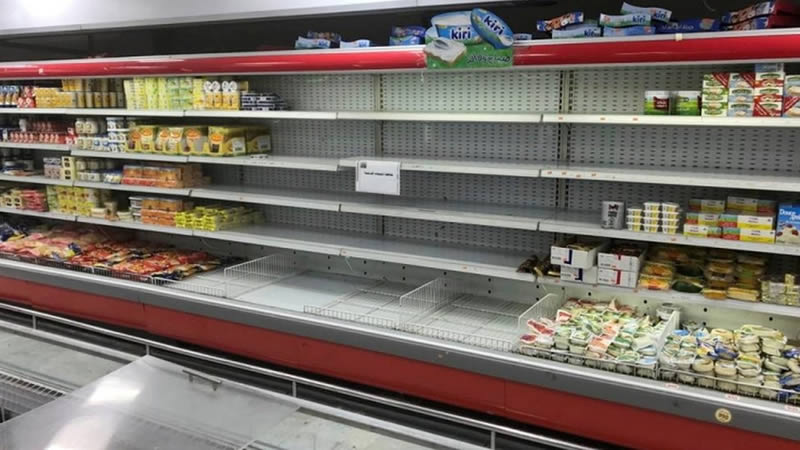Dec-10 headline inflation clocked in at 15.46%: Higher YoY food prices (+20.4%YoY) maintained upward pressure on headline inflation which was recorded at 15.46% in Dec-10. While slight reductions in contribution from perishables and House Rent Index (HRI) helped, heavy weight ‘non-perishables’ category and electricity tariff hikes (low base effect) kept inflation at this level.
Dec-10 CPI falls 0.51% MoM- first of FY11: A steep 12.9% MoM decline in prices of perishables, and a marginal 0.28% MoM uptick in that of ‘non-perishables’ caused 1.9% MoM deflation in food category. Overall CPI declined by 0.51% MoM.
Electricity tariff hikes fueling Core Trimmed inflation- surges to 13.6%YoY: While core NFNE (HRI weight in Non Food is 40%) is drifting along its long run level of 9.5% due to declining trend in HRI inflation (up 7.6% YoY FYTD average), Core (Trimmed) has inched up to 13.6% YoY, possibly due to higher electricity tariffs
Downward rigidity in food prices has driven up CPI; Supply normalization to help going forward: While downward rigidity in food prices has driven up CPI so far, we believe GoP measures to correct demand supply imbalances, supply replenishment and stable electricity tariffs should help moderate headline inflation going forward. Risks to outlook include: 1) Oil price hike (FYTD average USD79/barrel) 2) Non-oil commodity price jumps (Palm oil and Pulses) & 3) Imposition of pending electricity tariff increments.
Dec-10 Headline inflation clocked in at 15.46%
Higher YoY food prices (+20.4%YoY) maintained upward pressure on headline inflation which was recorded at 15.46% in Dec-10. However, overall contribution of food subgroup declined to 60%, with the chunk coming from ‘non-perishables category’ due its 35.2% weight in CPI basket. Moreover, a cumulative 10% FYTD jump in electricity tariffs has caused inflation in the Fuel & Lighting sub-group to accelerate to 22.5% YoY – an 18-month high. The only major item showing a declining trend is the House Rent Index (HRI), which also explains why its contribution has been diminishing over consecutive months.
Dec-10 CPI falls 0.51% MoM- first of FY11
Adjustment in local food markets to supply shocks has led to a steep 12.9% MoM decline in prices of perishables. Coupled with a marginal 0.28% MoM uptick in prices of ‘non-perishables’, food category experienced 1.9% MoM deflation, causing overall CPI to drop 0.51% MoM.
Electricity tariff hike fuelling core trimmed inflation- surges to 13.6%YoY
Core NFNE, observed at 9.5% YoY in Dec-10, is hovering along its long run average and has declined marginally since Dec-09. However, this is explained by the declining trend in HRI (up 7.6% YoY FYTD average), which has a substantial weight in NFNE (Non Food weight at 40%). Core trimmed inflation on the other hand is clinging to FY10 levels, and inched up another 200bps YoY in Dec-10. This phenomenon can be explained by 10% FYTD increment in electricity tariff (4.37% weight), as well as higher YoY natural gas prices. Given no other tariff increments materialize in 2HFY11 (news reports), core inflation should dip, unless food inflation spill over causes inflationary expectations to gather pace.
Downward rigidity in food prices has driven up CPI; Supply normalization to help going forward
Post floods food prices have shown some downward rigidity. However, as GoP curtails/bans exports of certain vegetables to India and supply in local markets is replenished with fresh harvests, food and headline inflation should dip going forward. Moreover, if electricity tariffs are maintained at current levels in 2HFY11 (news reports), high base effect will also help moderate YoY inflation in Fuel & Lighting category, and further decelerate inflationary pressure. Risks to outlook include: 1) Oil price hike (FYTD average USD79/barrel) 2) Non-oil commodity prices (esp. Palm oil) & 3) Imposition of pending electricity tariff increments.
Economic & Political News
Fertilizer sector: ECC may approve revised plan of gas load management
Economic Co-ordination Committee (ECC) of the cabinet scheduled to meet today (Thursday) may approve a revised gas load management plan for fertilizer sector to curtail gas load shedding from 45 to 30 days in a bid to cut prices of fertilizer.
Revenue collection: Govt eyes taxing corporate sector assets, earnings
After the first review of the IMF had mentioned some alternative measures that could be implemented to increase revenue collection. These included a carbon tax, gross asset tax and wealth tax. Government is considering all options, including a one-time wealth tax surcharge. This surcharge would be a one-off deduction against income, over and above the usual income tax rate. However, member Tax Reform Coordination Group (TRCG) Shabbar Zaidi has advised MoF against the imposition of any new taxes, including gross asset tax or any new sales tax. He added that a recent meeting held between the TRCG and MoF officials had urged GoP to strengthen the administrative apparatus of the tax collection network.
Analyst Certification:
The research analyst(s) denoted AC on the cover of this report, primarily involved in the preparation of this report, certifies that (1) the views expressed in this report accurately reflect his/her personal views about all of the subject companies/securities and (2) no part of his/her compensation was, is or will be directly or indirectly related to the specific recommendations or views expressed in this report.
Disclaimer
The report has been prepared by Elixir Securities Pakistan (Pvt.) Ltd and is for information purpose only. The information and opinions contained herein have been compiled or arrived at based upon information obtained from sources, believed to be reliable and in good faith. Such information has not been independently verified and no guaranty, representation or warranty, expressed or implied is made as to its accuracy, completeness or correctness. All such information and opinions are subject to change without notice. Descriptions of any company or companies or their securities mentioned herein are not intended to be complete and this document is not, and should not be construed as, an offer, or solicitation of an offer, to buy or sell any securities or other financial instruments.
Research Dissemination Policy
Elixir Securities Pakistan (Pvt.) Ltd. endeavors to make all reasonable efforts to disseminate research to all eligible clients in a timely manner through either physical or electronic distribution such as mail, fax and/or email. Nevertheless, not all clients may receive the material at the same time.
Company Specific Disclosures
Elixir Securities Pakistan (Pvt.) Ltd. may, to the extent permissible by applicable law or regulation, use the above material, conclusions, research or analysis in which they are based before the material is disseminated to their customers. Elixir Securities Pakistan (Pvt.) Ltd., their respective directors, officers, representatives, employees and/or related persons may have a long or short position in any of the securities or other financial instruments mentioned or issuers described herein at any time and may make a purchase and/or sale, or offer to make a purchase and/or sale of any such securities or other financial instruments from time to time in the open market or otherwise. Elixir Securities Pakistan (Pvt.) Ltd. may make markets in securities or other financial instruments described in this publication, in securities of issuers described herein or in securities underlying or related to such securities. Elixir Securities Pakistan (Pvt.) Ltd. may have recently underwritten the securities of an issuer mentioned herein.
Other Important Disclosures
Foreign currency denominated securities is subject to exchange rate fluctuations which could have an adverse effect on their value or price, or the income derived from them. In addition, investors in securities such as ADRs, the values of which are influenced by foreign currencies effectively assume currency risk. Foreign currency denominated securities is subject to exchange rate fluctuations which could have an adverse effect on their value or price, or the income derived from them. In addition, investors in securities such as ADRs, the values of which are influenced by foreign currencies effectively assume currency risk.
Contributed By













